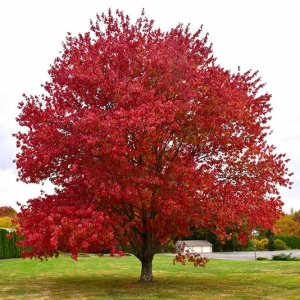Description
The Bur Oak is one of the slower growing oaks, but a good choice for urban areas as it is quite tolerant of heavy air pollution and it adapts to a wide variety of soil types, including clay. It is actually the most common oak in Ontario.
The Bur Oak’s large leaves are 15 to 25 centimeters long, and are shiny green on top, and pale and hairy underneath.
Its acorns, which are 1.5 to 3 centimeters long, have a deep cup covering 2/3 of the acorn. The acorn cups have bristle fringes around their upper edge.
Depending on where it grows, the shape of the Bur Oak can vary. The Bur Oak is usually tall with a straight trunk and large canopy, although if grown in shallow soil, it can be smaller with a twisted trunk and gnarled branches.
The Bur Oak’s roots grow deep into the soil, so plant it where there aren’t underground pipes.
Make sure you have a lot of space for this oak as the roots are very competitive so it could harm other trees if they are planted too closely to each other.

| Bur Oak Facts and Features | |
| Mature Size | Large Height 15 - 30 metres tall (50 - 100 ft.) |
| Sun/Shade | Prefers full sun, but can tolerate moderate shade |
| Moisture | Can tolerate a variety of moisture levels |
| Soil | Adaptable to a wide of soil types. |
| Flowers | No |
| Fruit | Acorns |
| Special Features | The bur oak’s roots grow deep into the soil, so plant it where there aren’t underground pipes. |






